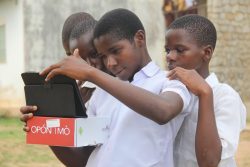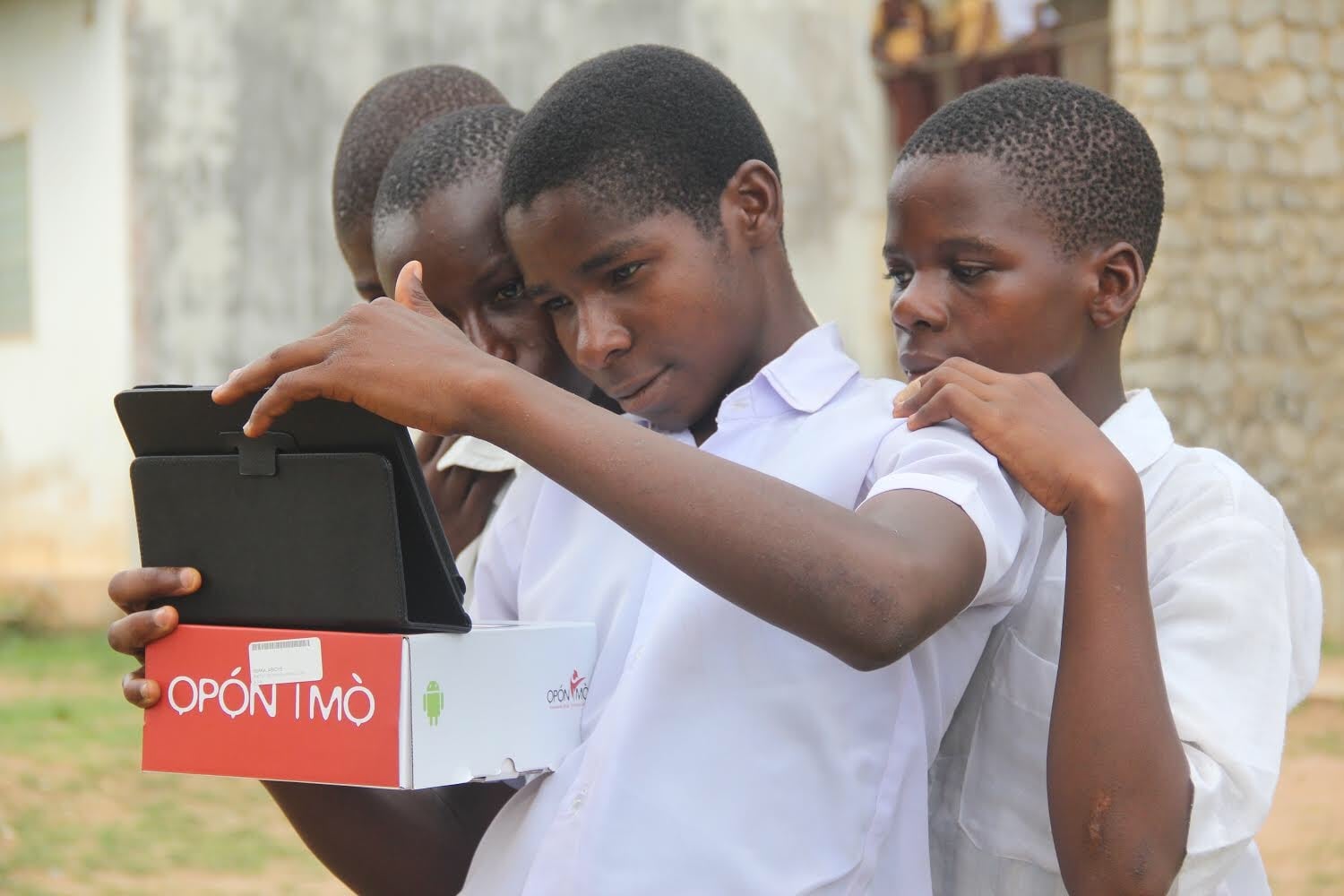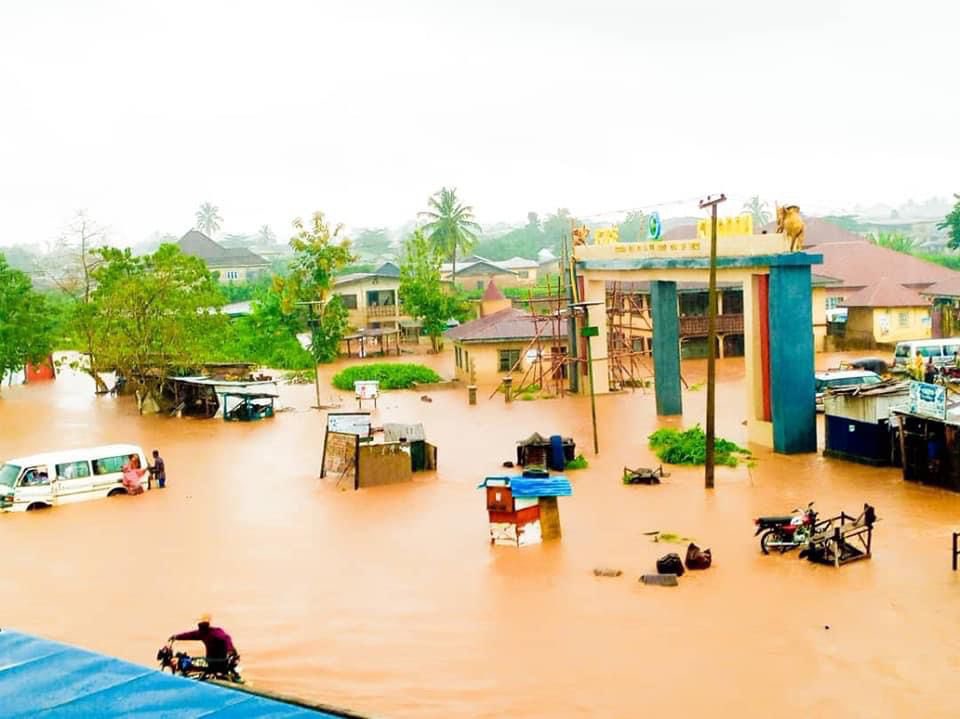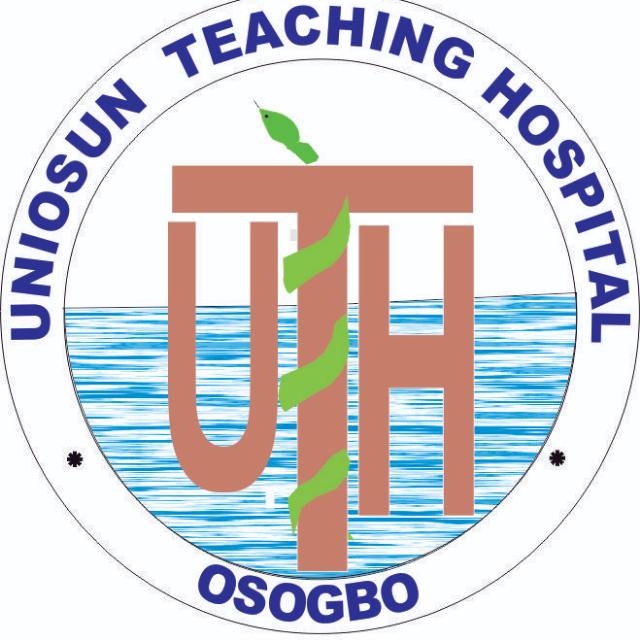Over half of the Nigerian population is currently under the age of 19, and many of those 100 million children will not be properly educated. We already have the highest number of out-of-school children in the world—13.2 million, up from 10.5 million in 2010—but the education crisis goes beyond the numbers; the quality of education is subpar at all levels, particularly in public institutions.
The story is the same at state level. In Osun state, barely 5% of school leavers were matriculable in 2010, and that year, the average class had an 80:1 student:teacher ratio.
Amid all this, Nigeria is sleepwalking into the fourth industrial revolution. Not everybody will work in a technology-related field, but it is safe to imagine that a lot of unskilled work reserved for the poorly-educated would be phased out by technological advancements. Moreover, the cusp of a new technological or economic era is the closest we will get to a level playing field or a fresh start; if Nigeria is to leapfrog its development, it will surely do so by preparing millions of its young people for tomorrow’s economy.
Unfortunately, the resources to achieve this are limited. The Federal Government allocated $1.7 billion (₦612 billion) to the Ministry of Education in the 2019 Budget, a proportion (7%) below the UNESCO recommended allocation of 15%. Again, Nigerian states fare little better. Many of them barely have enough to cover recurrent expenses and the meaningful education investments for Nigeria are of the capital variety.
So, we have a conundrum. Nigeria’s education gap is deepest just when education is most needed, and the country does not have the funds for it. The most expedient way out? Technology.
Technology is not a silver bullet, but it will help.
Using technology to solve problems in education is not a novel idea. The appeal of technology is its ability to circumvent physical or financial barriers in education. We see this most vividly in the rise of Massive Open Online Courses (MOOCs) which is giving people all over the world the chance to pick up valuable skills almost costlessly from world-renowned higher education institutions.
Even though MOOCs and similar platforms get the most attention, technology interventions are just as common—and are arguably more useful—lower down the ladder. One interesting application we have seen all over the world is the distribution or use of tablets in primary and secondary schools.
One example close to home is the Tusome scheme in Kenya, a $74 million USAID-funded program where tablets were freely given to all public primary school students as part of an aggressive set of education reforms. The scheme is barely half-a-decade old but has already had an impact. In the first year of operation, the proportion of Grade 2 students who could read at 30 words per minute rose from a third to two-thirds.
Thailand pursued an even more ambitious program, delivering 800,000 tablets to Primary 1 student across the country. Tablets are also used extensively in more developed countries: the United Kingdom and Australia are just two countries where tablet use in primary and secondary education is high and rising.
Tablets may be popular but they have also been successful, proving to be a cost-effective and modern way of boosting student motivation and improving learning outcomes. In a way, it is an indictment on Nigeria that the tablet experiment only began recently in Osun State; after all, such technologies are more useful in developing countries where teachers are less skilled or less reliable. As an Indian education technology expert pointed out, “In India, we need 9 million teachers, but we don’t have 9 million people who can teach.”
Before looking at the lessons to be learnt from the use of tablets in Nigeria’s school setting, an important caveat must be made. People often see technology as the solution to problems when it is really just a tool that helps you design your solution. Understanding this distinction can determine whether your technology intervention succeeds or not. As the World Bank highlighted, “If you dump hardware in schools, and expect something magical to happen as a result—it won’t.”
Unsurprisingly, tablets have not worked everywhere. Over a million were distributed in Uruguay with no corresponding effect on students’ scores. Remembering that a tablet, like “pencil and paper, is a means, not an end”, makes it more pertinent to evaluate the Osun State experience to see what insights we can glean to help solve Nigeria’s education crisis.
Significant gains from a simple Opón Ìmò scheme.


The Osun table scheme—called Opón Ìmò—is pretty simple. The government distributed tablets to all Senior Secondary 3 (SS3) public school students in the State. The tablet has three components, and the first is an e-library which houses textbooks for the 17 core WAEC subjects and a few extras. The second is a virtual classroom with over 50 video tutorials for different subjects and 15 hours of audio voiceovers, and the last is the integrated test zone where students can access practice tests as well as past papers dating back 10 years.
50,000 tablets were ultimately distributed at the start, and since then, more than 300,000 students have benefited, with each set passing the tablet on to the next. Teachers were also given the tablets and were given basic training on how to use them so that they could embed the tablets into their classroom activities.
Admittedly, no robust evaluation of the impact of the tablet scheme has been undertaken but indicative reports are positive. For one, the state’s WAEC pass rate jumped from 16% in 2010 to 45% in 2017. In addition, the state has ultimately made cost savings: it would cost them an estimated ₦8.4 billion to provide physical copies of the same textbooks, and the actual program cost has been much less.
There have also been softer benefits. The mobility of the tablets is one big reason they have proved popular with students and school administrators all over the world and this holds true in Osun State. Meanwhile, we should not underestimate the aspirational power of the tablets (parents and students want to use it) in a country where some basic technologies remain the preserve of the wealthy.
Most importantly, the Opón Ìmò scheme is a modern solution to the state’s education problem. The students are engaged in a modern way and are forced to interact with technology before university, which better prepares them for modern society. Finally, the tablet has addressed a few local challenges. The e-library and virtual classroom ensure that students get all the material they need ahead of exams; previously, teachers rarely finished the syllabus, leaving students with a gap in their knowledge. And although the tablets were not meant to be substitutes for teachers, they mitigate the costs of teacher absenteeism, a problem in many developing countries.
Localised application of technology is the way forward.
The relative success of the Opón Ìmò program, like others around the world, comes down to the localised application of a potentially powerful tool. For example, whereas many tablet programs around the world focus on lower levels of education (e.g. primary), the Osun State government opted to prioritise school leavers.
That choice has a few benefits. Firstly, it is directly related to an immediate problem in the state’s education sector: the low proportion of matriculable students. So Opón Ìmò scratched a salient itch. And because the target group take external exams at the end of the academic year, the program became a natural experiment: tracking students’ results after the launch of Opón Ìmò would give an objective indication of the usefulness of the tablets.
Another interesting element of the Opón Ìmò design was the fact that the tablets were given out for free in an effort to “democratise access to learning”.


From a cost perspective, a needs-based approach would have been more appealing, i.e. only students that cannot afford the tablets get them for free. However, that recommendation misjudges the financial situation of the residents of the state. Many students (or parents) could not afford to buy textbooks while some chose not to, believing it was the government’s responsibility. Likewise, teachers are often unable to acquire all the materials required to teach the course due to funding constraints at public schools. Making the tablets free directly addresses these local challenges.
There is a lot more to learn if we were to scale the program to the federal level. For example, the Opón Ìmò tablets were not internet-enabled, reflecting both the weak internet connectivity in the state and the government’s desire to minimise distractions. However, it may be counter-productive to maintain this approach in all contexts. For example, students in well-connected parts of Lagos ought to have similar internet access to their peers abroad.
Still, technologies like the Opón Ìmò tablet are unlikely to achieve their full potential in Nigeria’s current infrastructure situation. For example, solar charging ports were given to schools in Osun State as a way to compensate for irregular power supply. Alas, Nigeria is not alone in such innovations. In Tanzania, as part of an Elon Musk-sponsored tablet giveaway program, a “solar mama” is given a charger in each village: she charges the devices overnight for the students and hands them over on their way to school.
Even as infrastructure challenges may constrain the deployment of technology in Nigeria’s education sector, technology can have a pull-effect on Nigerian industry and technology. In Osun State, the government indicated plans to one day produce the tablets locally. Eventually, they set up a public-private partnership with a company that now produces tablets, including those used by beneficiaries of the Federal Government’s N-Power program as part of their skill acquisition.
Again, this backward integration idea is not new. President Kagame launched Rwanda’s free laptop scheme in 2008 and moved to local production in 2015, albeit with some logistic hitches. More encouragingly, Côte d’Ivoire produced its own education tablet as early as 2012—making it Africa’s first education tablet—and the likes of Morocco already produce tablets locally. A tablet-producing factory may not sound like a big deal, but the knock-on effects on industrialisation and job creation are potentially significant.
Teachers are the final piece of the jigsaw puzzle.
The Opón Ìmò scheme falls short in two areas and we can learn essential lessons there: teacher involvement and data collection.
The reality is that students will always use the tablets because they like them; whether or not the tablets are an effective learning tool then depends on the attitude and usage of teachers. We see this in different countries. One of the critical features of the Tusome scheme in Kenya is the emphasis on teacher training and buy-in. The program has trained every public school lower primary school teacher on best-practice usage of the tablets. More impressively, the institution behind the Tusome scheme tested different versions of the tablet, soliciting feedback from the local teacher’s union at each turn, thereby ensuring that teachers felt included in the process.
In contrast, Thailand’s grand tablet scheme has been impeded by the fact that teachers were largely ignored. Teachers were not given tablets and this makes it difficult for them to incorporate it into their teaching. The second issue is that even when teachers were given tablets, teachers struggled to monitor students like they would in a paper-based classroom. Unsurprisingly, a Microsoft report found that the success of programs of this type was heavily correlated with teacher participation.
In Osun State, the program was still student-centric. Although teachers were given basic training on how to use the tablet, there was lingering human and institutional resistance to change, as would be expected when this level of innovation is introduced in education. For example, some teachers were less willing to learn how to use the tablets, perhaps because they did not want to change their trusted teaching methods. Meanwhile, school administrators sometimes insisted on retaining paper-based lesson notes even though Opón Ìmò has a much more efficient lesson note feature. This friction means that the extent to which the tablets were used in the classrooms depended more on the individual teacher (and the culture of the school) than on the programme design.
It is much harder to address this problem during the program and best-practice would be to prioritise teacher and administration buy-in once the tablet reached a particular school. Countries like Kenya show us how: give teachers a different version of the tablet and make them the centre of the program.
While it would be uncontroversial to assert that Opón Ìmò has had a sizable positive effect on education outcomes in Osun State, two issues are unresolved: how large is the effect and what element of the program made the difference?
That level of monitoring was not embedded into the scheme at the start and it is much harder to do it later. A meta-study of global laptop distribution schemes came to a similar conclusion in 2010: “On the basis of the review it is suggested that future one-laptop-per-child deployment projects embed an evaluation framework at the very beginning of a deployment, preferably at the project design and planning stage.” This forces you to clarify the key objectives of the scheme and identify the primary indicators to be tracked. It also forces you to collect more detailed baseline data, e.g. the proportion of students that previously purchased all required textbooks.
The tablets themselves should be a data collection device and data analysis should be part of the teacher or administrator’s remit. A 2013 research study on the Thai tablet scheme put it this way: “Well designed tablet activities should have suitable data collection and analysis techniques, such that teachers and schools (as well as educators and technologists) can assess the learning outcomes of individuals, classes and schools.”
The Opón Ìmò scheme is a bold and necessary attempt at finding innovative ways to plug Nigeria’s educational gap. It is one worth replicating at a national level, armed with the lessons of the Osun experience. For example, the state sometimes struggled with accounting for all the tablets at the end of the academic session. Students had either misplaced theirs or wanted to keep them, which is an unsurprising story in Nigeria.
On another note, Opón Ìmò worked well as a socially embedded effort to tackle some intrinsic challenges in the Osun public educational system – where students’ access to learning materials was limited and inequitable. Hence, at a national level where there are marked differences in language, literacy, and so on, an equally localised approach to solution delivery is recommended. As Nigerian policy-makers and entrepreneurs tackle the education challenge, the enduring lesson of Opón Ìmò should be the importance of applying trusted and impactful tools in a localised way. The results will swiftly follow.











